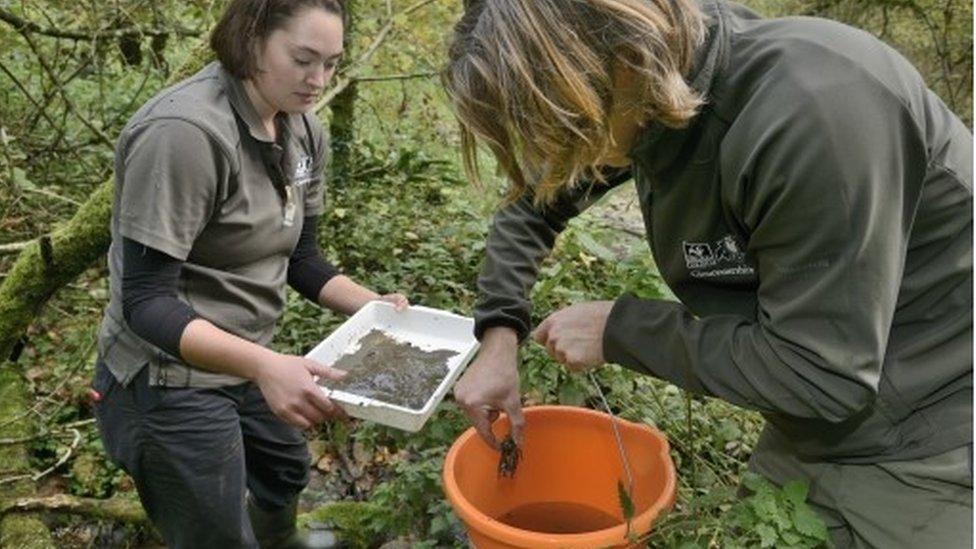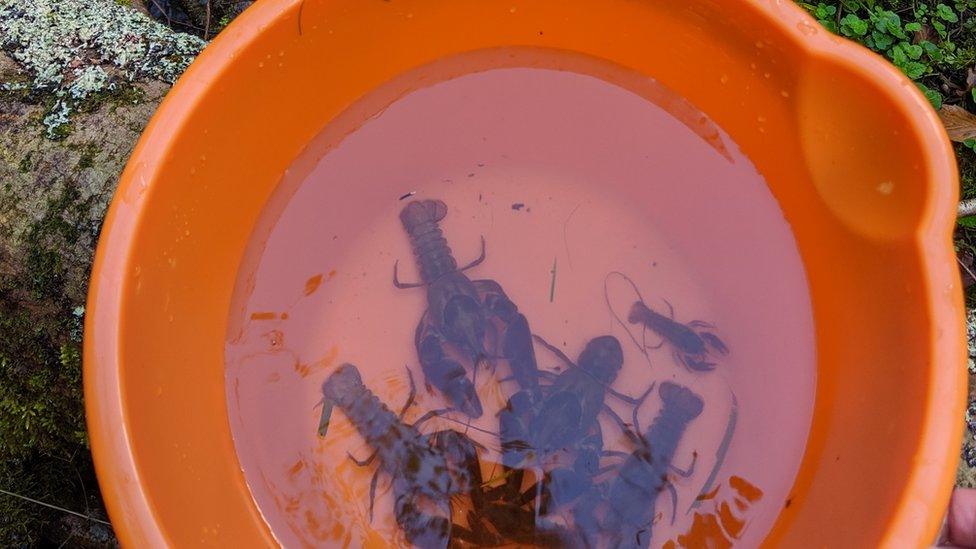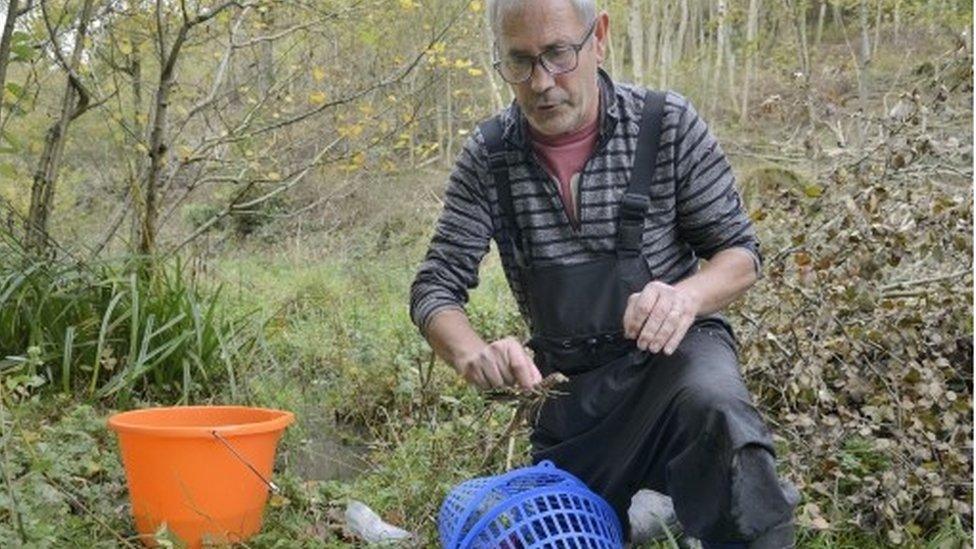Endangered white-clawed crayfish moved to Stroud valleys
- Published

Funding was secured from Severn Trent Water for the crayfish translocation project
A project to relocate one of the UK's most endangered species has successfully moved a population of white-clawed crayfish to a safer site.
Gloucestershire Wildlife Trust (GWT) said the project "exceeded expectations regarding how many healthy crayfish" were transferred to the Stroud valleys.
White-clawed crayfish are being killed off by American signal crayfish which were introduced to the UK in the 1970s.
John Field from GWT described the species as "the UK's black rhino".
The white-clawed crayfish is the UK's only native freshwater crayfish and was once common and widespread in rivers and streams.

The white-clawed crayfish is a protected species
The American signal crayfish, which was introduced in the 1970s as a food source, carries a fungal disease known as crayfish plague which it is immune to, but the white-clawed crayfish has no natural resistance to it.

John Field has been monitoring an isolated white-clawed crayfish population in the Stroud area
Mr Field said it was "important to protect the fragmented populations that are left".
He said: "Through the translocation we are promoting the re-colonisation of some historic sites where they used to be found. On the day of the collection, all the external factors came together nicely.
"The water levels were just right, there hadn't been too much rain previously so water clarity was really clear allowing the team to easily locate and remove the crayfish."
He added they would monitor the site annually but it would "take a number of years before it is possible to say whether the population has settled and is sustainable".

White-clawed crayfish live on a diet including water plants, carrion, invertebrates and one another
Jenny Parsons from GWT said "biosecurity" was also important as crayfish plague was easily moved between watercourses.
She said: "We follow the 'check, clean, dry' approach to biosecurity. Making sure things are properly dry after being in the water is crucial, and something everyone needs to be doing.
"This includes everything from wellies, to fishing equipment and even your dog's paws."

Richard Spyvee from GWT said they were "doing everything we can to look after these crayfish"
- Published11 September 2019

- Published15 August 2018

- Published5 April 2015

- Published28 June 2013
dorsetwildlifetrust.jpg)